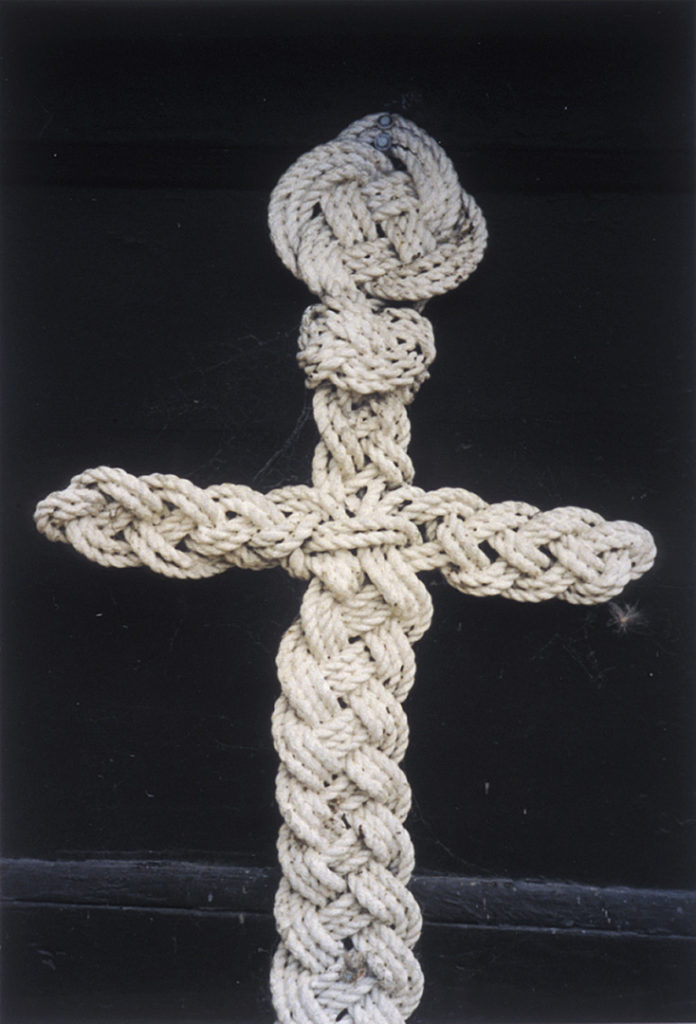OTHER VENUES Sarjeant Gallery, Whanganui; Dunedin Public Art Gallery
Gavin Hipkins is known as a ‘tourist of photography’. He is both a photo-tourist (out and about, photographing things in the world) and a tourist of the medium itself (navigating its history, modes, manners, and mechanics).
The Homely is a photographic frieze of eighty abutted colour photos. The images were taken using a plastic tourist camera on Hipkins’s travels through New Zealand and Australia between 1997 and 2000. It’s often hard to tell which images were where. His odyssey begins with a rope cross and culminates on a dull view of Picton. Along the way, it takes in a lighthouse, an antique Antarctic snow mask, blossoming trees, a burning house, grey warships in Sydney harbour, a model of a tall ship, an abandoned backyard tyre swing, a puffer jacket, a ‘European Food' menu in a takeaways, a dilapidated imitation Māori gateway, a war memorial, statues, and more.
Hipkins calls The Homely a ‘post-colonial Gothic novel’, yet the narrative is oblique. There is no human protagonist, except for the viewer who navigates the sequence, seeking connections. For The Homely, Hipkins says he sought out images ‘used to define nationhood or historic folklore’. But it isn’t so simple. As Robert Leonard says, 'While ship’s rigging, a mock Māori gateway, and a Union Jack prompt nationalist reverie, the tyre swing, hooded jacket, and takeaway menu seem spooky, out-of-place. The Homely is haunted by unfinished business; gritty fragments that resist integration into this empire of signs.’
Hipkins’s title nods to Sigmund Freud’s 1919 essay ‘The Uncanny’. In it, the father of psychoanalysis defines the uncanny through the German words ‘Heimlich’ (homely) and ‘Unheimlich’ (unhomely). Freud shows that the terms are used interchangeably. What is uncanny is both familiar and unfamiliar. Hipkins' often blurry and indistinct photos suggest that the colonial notion of home is equally blurry and indistinct. But, what is missing from the story that we tell ourselves in our desperate search to define a sense of nationhood?
In the catalogue, curator Lara Strongman writes, 'This is a work of profound cultural analysis, in which Hipkins has pictured the phantoms of national character.' Peter Brunt writes, 'Plumbing the depths of what it means to be "kiwi”, a New Zealander, a Pākehā, is Hipkins's game in The Homely.' Reviewers also love the work. Lloyd Jones concludes his Listener review saying, 'It is a superb show, and among the best evidence that local photography is at last developing a brain.'
The Homely is presented as part of a suite of exhibitions, Four Faces of New Zealand Art: Rita Angus, Michael Illingworth, Gavin Hipkins, Peter Peryer.









































































































































































































